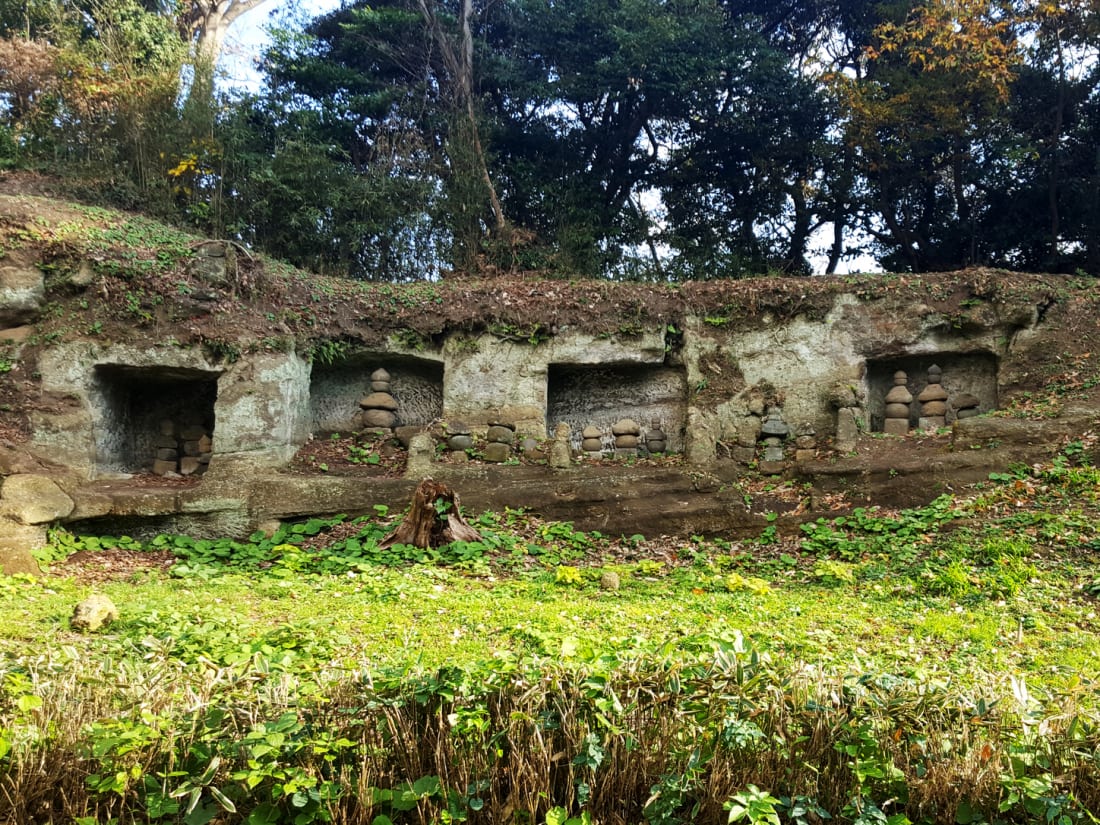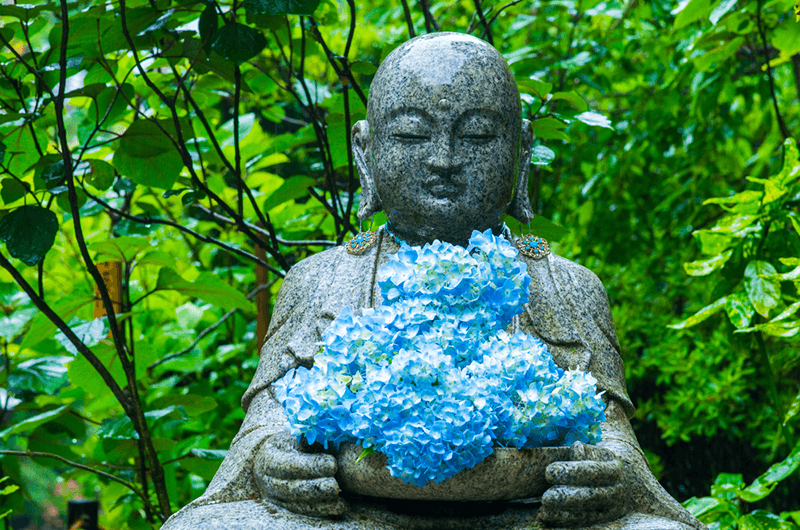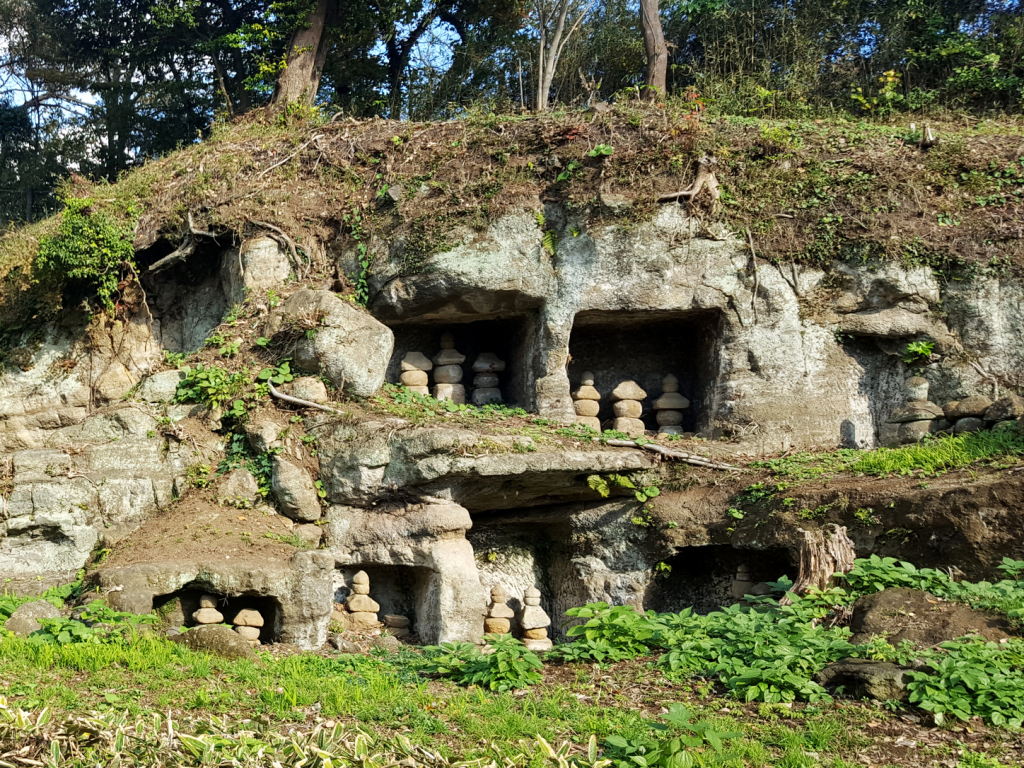The hills between the cities of Kamakura and Zushi have a dark secret. For hundreds of years they have served as the final resting place of samurai, Buddhist priests and wealthy merchants entombed in the many yagura graves hidden throughout the mountainside.
Yagura are manmade cave-tombs carved into rocks, which can be found all over Japan, but which are most numerous on the border of the old samurai capital. It’s estimated that there might be anywhere between 1,500 and 5,000 yagura there, with many still left undiscovered. Fortunately, the most exciting collection of the graves, the Mandarado Yagura, have been mapped out and will soon be once again available to the public.
The Mandarado tombs consist of over 160 yagura carved into a 30-foot cliff in three tiers dating back to about the 15th century. Although not the oldest yagura ever discovered, it is the single largest graveyard of its kind in all of Japan, and sheds some light on the country’s funeral practices.
In the past, skulls and other bone fragments were discovered at the site, which suggests that some people were laid to rest there whole. At the same time, the discovery of a large cremation pit and ashes in some of the yagura tells us that others were burned before being placed in the graves. Perhaps the funeral practices were different depending on the deceased’s social status.
In any case, there’s no need to avoid Mandarado in the case of a zombie apocalypse because all the bodies have long been removed from there, and the yagura are now strictly cenotaphs (empty tombs.) They’re also a sight to behold.

The rectangular yagura carved by human hands into the face of a rocky hill clash mesmerizingly with the greenery of nature that’s overtaken the site over the years. Mandarado is simultaneously beautiful and intimidating. It reminds you of ancient ruins from a Studio Ghibli movie like Nausicaä of the Valley of the Wind. It’s no wonder that some people resorted to breaking the law to get a closer look at these yagura.
Despite being designated a National Important Historical Site, Mandarado was actually closed off to the public in 1996 due to the large human presence having a negative impact on the graves. Over the years, a team of volunteers have worked to restore Mandarado to its previous glory, during which time there was no shortage of tourists jumping the closed gate surrounding the site to see the abandoned necropolis up close.
Luckily, you won’t have to do that since the site was reopened in 2014 and is now accessible to the public for a few months a year, usually between April and May, and October and December. So start planning your venture now because your window will be short. Also, getting there isn’t exactly the easiest thing in the world.
The entrance to Mandarado is a little hidden. You can get there by starting off in Kamakura or Zushi and following a few of their designated hiking trails, but that would take you more than an hour. It’s much easier to start at a place called Kotsubo and ask directions either towards Mandarado directly or the Nagoe Kiridoshi pass, a narrow, rocky passageway in the general vicinity of the yagura cluster. There are in fact seven Kiridoshi passes in the area so make sure you have the right one.
Also, be sure to dress appropriately. Hiking attire (sturdy boots, long pants, maybe a walking stick if you need it) is necessary as there will be a lot of climbing up stairs and steep trails, especially during the final stretch. Unfortunately, Mandarado just isn’t accessible to people in wheelchairs.
In the end, though, the journey will be more than worth it. As you pass all the other, singular yagura and mountain shrines while surrounded by the splendor of nature, you will experience Japan just as people did hundreds of years ago. There are few other places where you can get this close to living Japanese history.

EXPLORE THE ANCIENT CAPITAL
Ancient Kamakura and the naval history of Yokosuka
For an extra 5% off use our coupon code TOKYOWEEKENDER during check-out.









